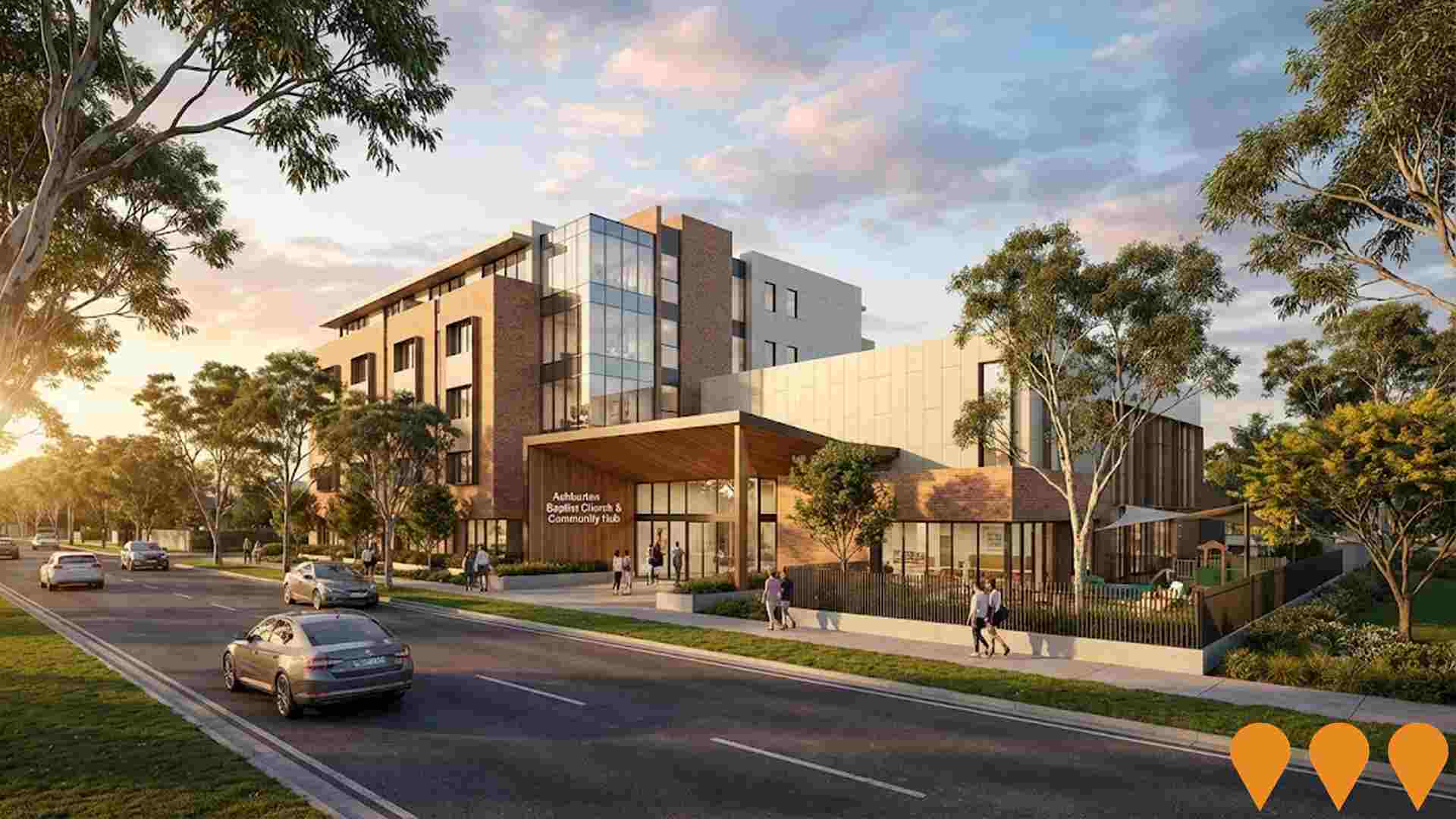Chart Color Schemes
est. as @ -- *
ABS ERP | -- people | --
2021 Census | -- people
Sales Activity
Curious about local property values? Filter the chart to assess the volume and appreciation (including resales) trends and regional comparisons, or scroll to the map below view this information at an individual property level.
Find a Recent Sale
Sales Detail
Population
Ashburton is positioned among the lower quartile of areas assessed nationally for population growth based on AreaSearch's assessment of recent, and medium term trends
Ashburton's population, according to AreaSearch's analysis, is approximately 8,489 as of August 2025. This figure represents an increase of 537 people, a growth rate of 6.8%, since the 2021 Census which reported a population of 7,952. The change was inferred from the estimated resident population of 8,403 in June 2024 and an additional 136 validated new addresses since the Census date. This results in a population density ratio of 2,989 persons per square kilometer, placing Ashburton in the upper quartile relative to national locations assessed by AreaSearch. Over the past decade, Ashburton has shown resilient growth patterns with a compound annual growth rate of 0.5%, outperforming its SA3 area. Population growth was primarily driven by overseas migration during recent periods.
AreaSearch is adopting ABS/Geoscience Australia projections for each SA2 area released in 2024 using 2022 as the base year. For areas not covered, AreaSearch utilises VIC State Government's Regional/LGA projections released in 2023 with adjustments made via weighted aggregation of population growth from LGA to SA2 levels. Growth rates by age group are applied across all areas for years 2032 to 2041. According to these projections, Ashburton is expected to grow by 319 persons to 2041, an increase of approximately 2.7% over the 17-year period.
Frequently Asked Questions - Population
Development
Recent residential development output has been above average within Ashburton when compared nationally
Ashburton has recorded approximately 94 residential properties granted approval annually. Over the past five financial years, from FY-21 to FY-25, a total of 471 homes have been approved, with an additional 15 approved so far in FY-26. On average, around 0.2 people per year have moved to the area for each dwelling built during this period, indicating that supply is meeting or exceeding demand and providing greater buyer choice while supporting potential population growth above projections.
The average construction value of new properties is $871,000, suggesting developers are targeting the premium market segment with higher-end properties. In FY-26, $16.3 million in commercial development approvals have been recorded, indicating balanced commercial development activity. Compared to Greater Melbourne, Ashburton records 108.0% more construction activity per person, which should provide buyers with ample choice. However, building activity has slowed in recent years. This high level of construction activity reflects strong developer confidence in the area. New building activity shows a mix of 45.0% detached dwellings and 55.0% attached dwellings, focusing on higher-density living to create more affordable entry points for downsizers, investors, and first-home buyers. This represents a significant change from the current housing mix, which is currently 76.0% houses, reflecting reduced availability of development sites and shifting lifestyle demands and affordability requirements.
The location has approximately 161 people per dwelling approval, indicating an expanding market. Population forecasts indicate Ashburton will gain 233 residents through to 2041. With current construction levels, housing supply should adequately meet demand, creating favourable conditions for buyers while potentially enabling growth that exceeds current forecasts.
Frequently Asked Questions - Development
Infrastructure
Ashburton has very high levels of nearby infrastructure activity, ranking in the top 10% nationally
The performance of an area can significantly be influenced by changes in local infrastructure, major projects, and planning initiatives. AreaSearch has identified a total of 13 projects that are likely to impact the area. Notable projects include Ashburton Place (formerly known as the Ashburton Shopping Centre site), Ashburton Baptist Church Redevelopment, Ashburton Village Precinct Structure Plan (Ashburton Activity Centre), and Alamein Line Duplication (between Ashburton and Alamein). Below is a list detailing those projects likely to be most relevant.
Professional plan users can use the search below to filter and access additional projects.
INFRASTRUCTURE SEARCH
 Denotes AI-based impression for illustrative purposes only, not to be taken as definitive under any circumstances. Please follow links and conduct other investigations from the project's source for actual imagery. Developers and project owners wishing us to use original imagery please Contact Us and we will do so.
Denotes AI-based impression for illustrative purposes only, not to be taken as definitive under any circumstances. Please follow links and conduct other investigations from the project's source for actual imagery. Developers and project owners wishing us to use original imagery please Contact Us and we will do so.
Frequently Asked Questions - Infrastructure
Suburban Rail Loop East
First stage of Melbourne's transformational 90km orbital rail network, SRL East delivers 26km of twin underground tunnels between Cheltenham and Box Hill. The project includes six new underground stations (Cheltenham, Clayton, Monash, Glen Waverley, Burwood, Box Hill) and a transport superhub at Clayton. Early and main works are underway across all station sites, with TBMs arriving in late 2025 and tunnelling expected to start in 2026, launching from Clarinda and Burwood. The project connects key activity centres, employment hubs, Monash University, Deakin University, and major health facilities. It will feature fully automated trains, create up to 8,000 direct construction jobs, and enable 70,000 new homes by the 2050s. Passenger services are targeted for 2035.
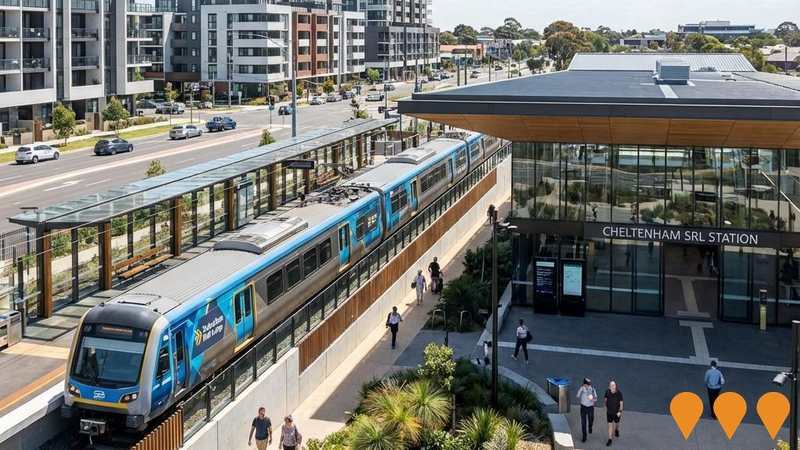
Chadstone Activity Centre Plan
Comprehensive 30-year Activity Centre Plan by the Victorian Planning Authority (VPA) and the Department of Transport and Planning (DTP) to guide the area's growth for the next few decades, facilitating approximately **6,500 to 8,000 new homes** by 2051. The plan provides a framework for more homes in the Activity Centre Core (closest to the shopping centre) and surrounding **walkable catchment** with lower-rise apartments and townhouses. This plan has been **finalised** following two rounds of community consultation and has been prepared, adopted and approved through **Amendment GC252** to local Planning Schemes, making it law as of September 2024. A new, streamlined planning process is introduced in the core, along with an **infrastructure funding mechanism**. The estimated completion year of the plan's objectives remains 2054.
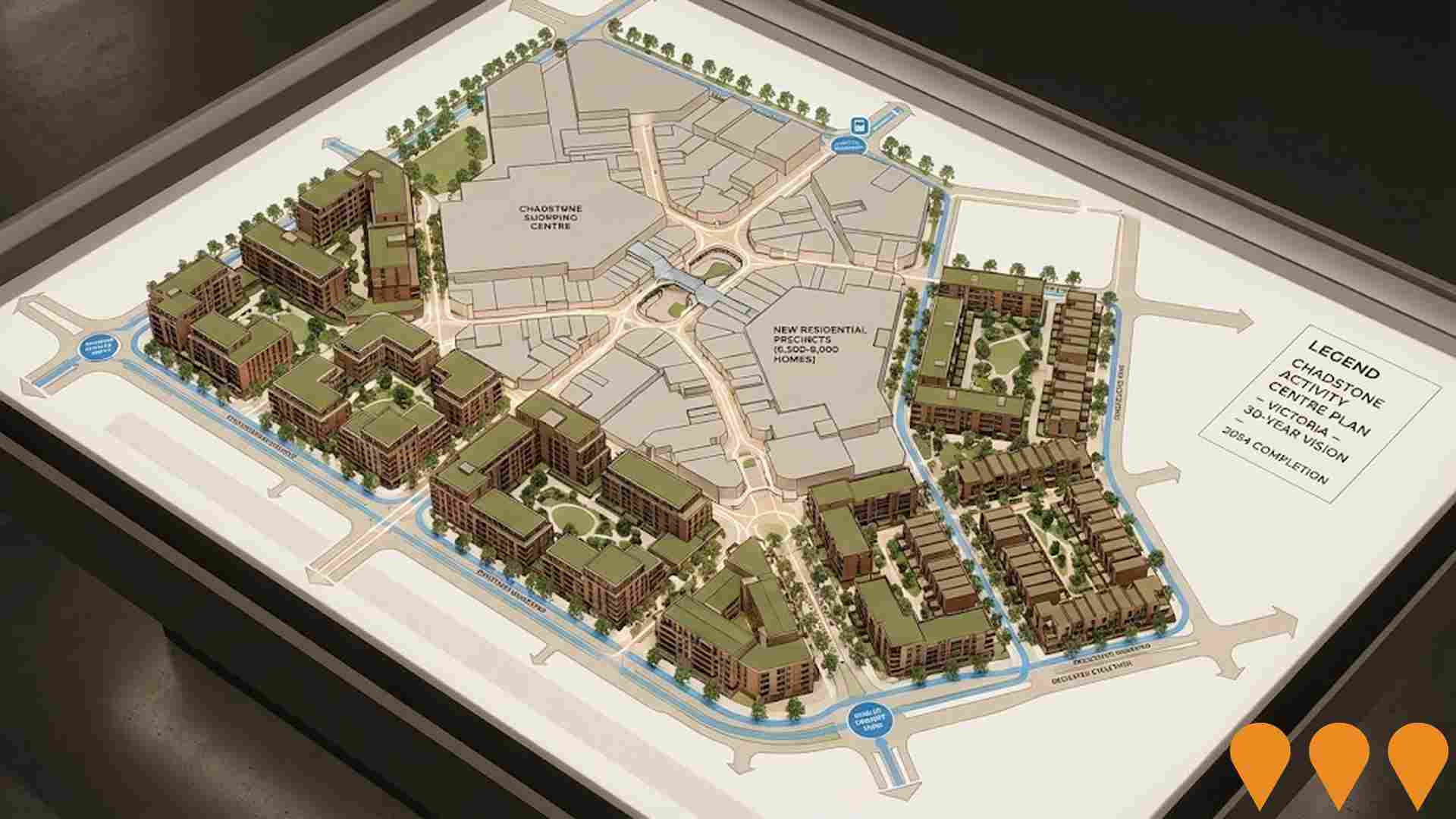
Ashburton Village Precinct Structure Plan (Ashburton Activity Centre)
Council adopted structure plan for the Ashburton Village activity centre, setting a long term vision to 2040 for revitalising the High Street shopping strip, concentrating higher density housing around Ashburton Station, and improving public spaces, walking and cycling links, transport access and parking. The plan is intended to support around 800 new dwellings and additional retail and commercial floorspace while protecting the centre's village character and heritage values.

Ashburton Place (former Ashburton Shopping Centre site)
Large scale mixed use redevelopment of the former Ashburton Shopping Centre site at 207-219 High Street in Ashburton. The project is expected to deliver around 450 new apartments in several mid rise buildings above a new supermarket, street facing shops and improved public open space and laneway connections into the Ashburton Village shopping strip.
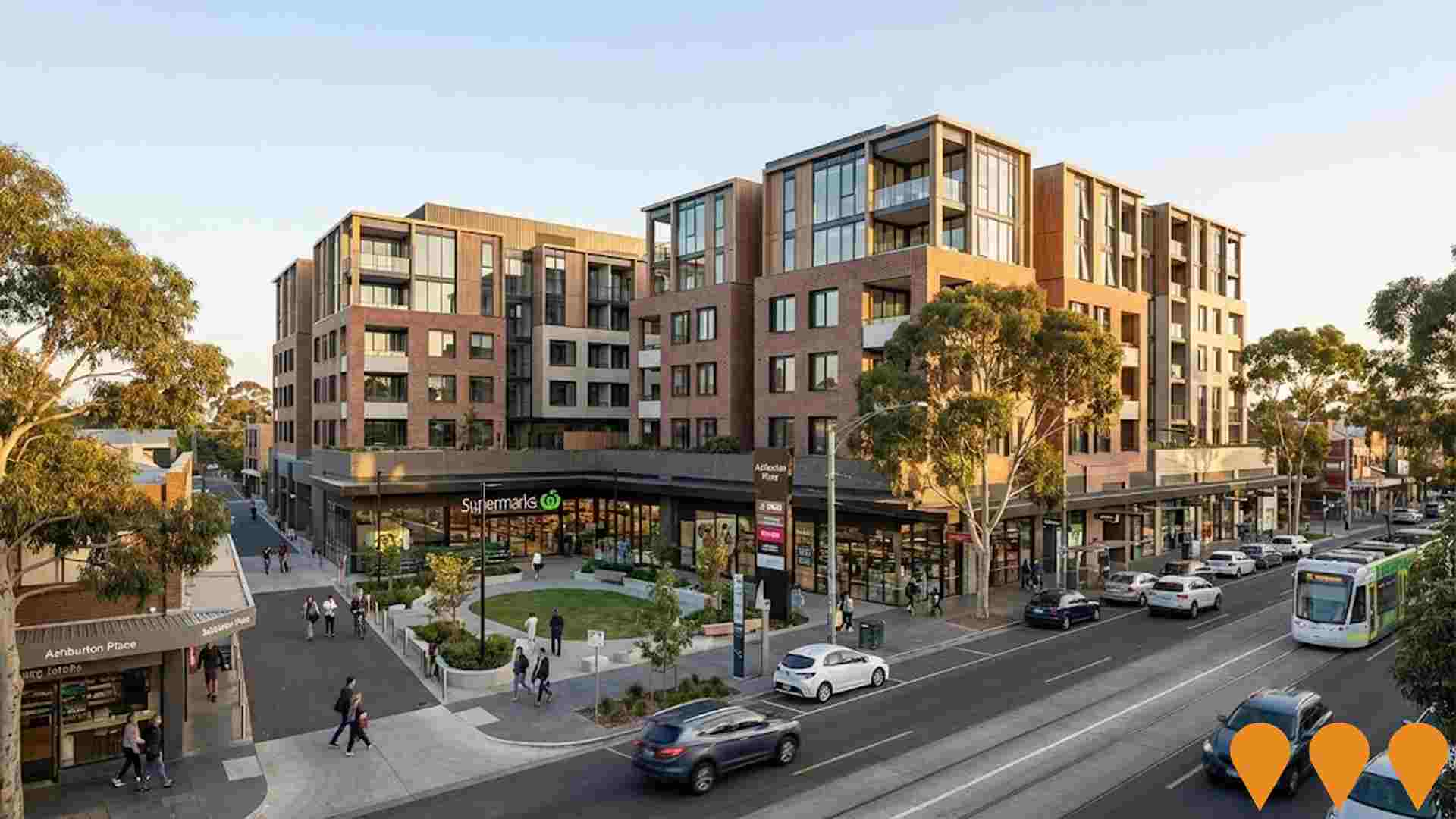
Alamein Line Duplication (Ashburton to Alamein section)
Proposed duplication of the single-track section of the Alamein railway line between Ashburton and Alamein stations, including associated level crossing and signalling upgrades near Riversdale, to allow more frequent and reliable services and better integration with Melbourne's wider rail network. :contentReference[oaicite:0]{index=0} :contentReference[oaicite:1]{index=1}
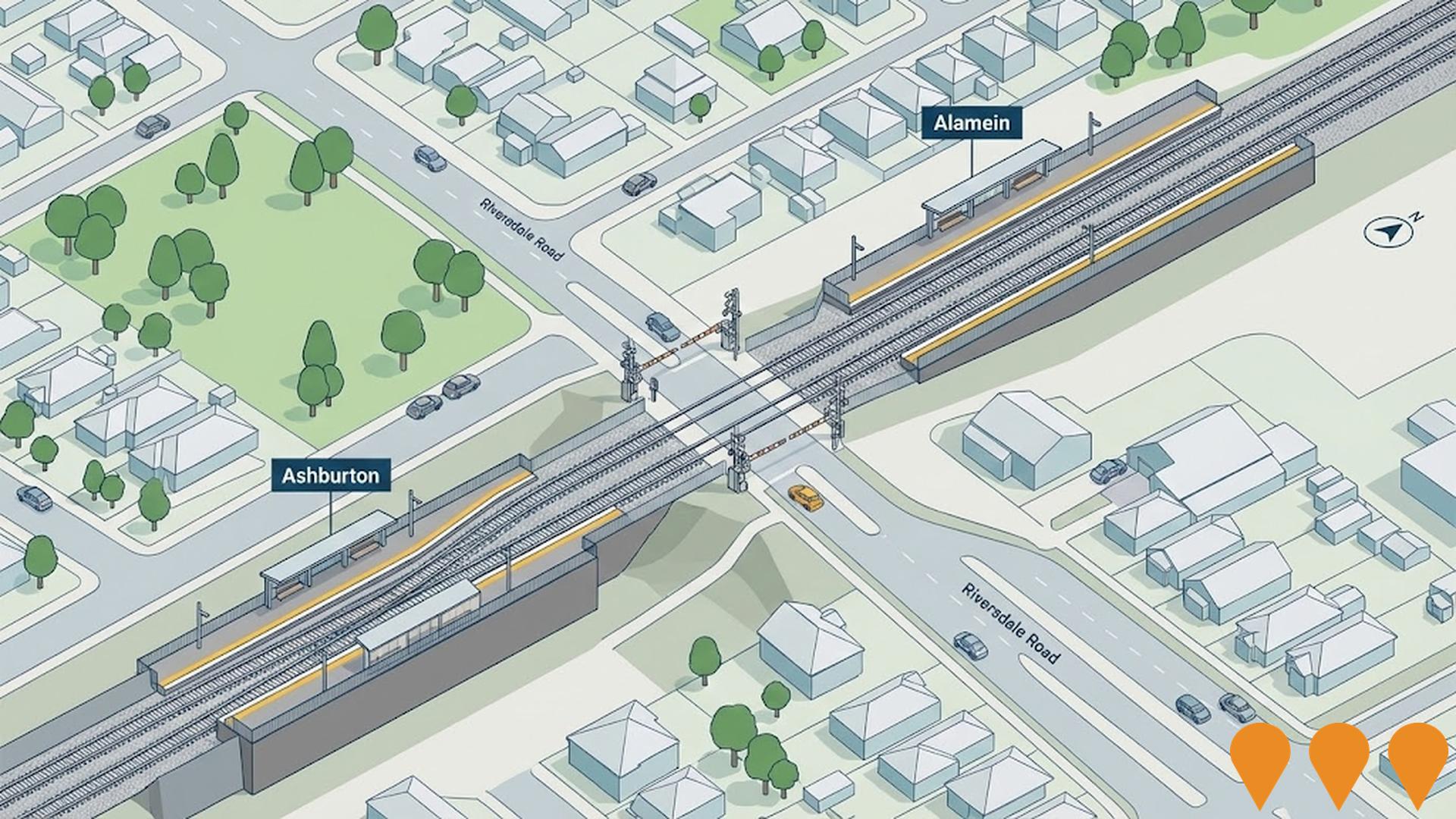
Glen Iris Community Health Hub
New integrated community health facility providing primary care, allied health services, and community health programs. Features modern medical facilities and community meeting spaces.

Ashburton Library and Community Centre
New integrated library and community centre facility featuring modern library services, community meeting rooms, technology spaces, and cultural programming areas. Designed as a community hub for lifelong learning.
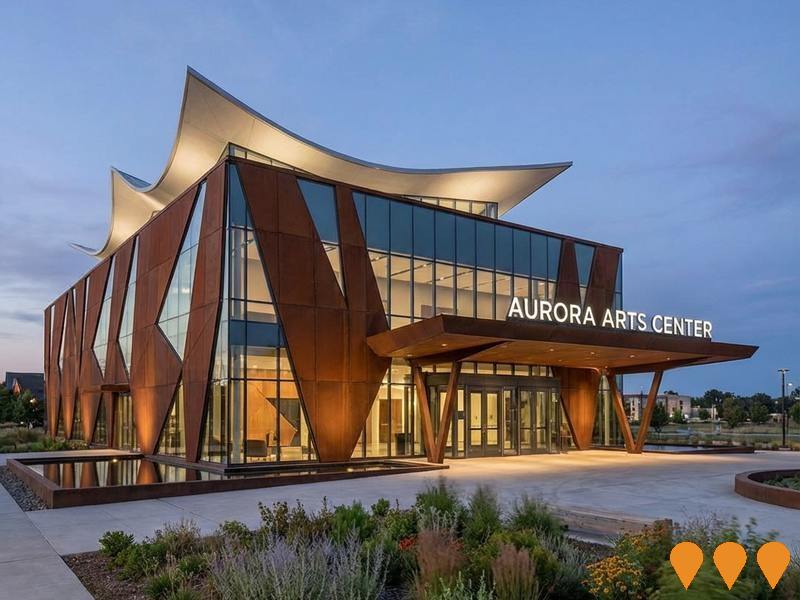
High Street Bus Priority Improvements
Bus priority improvements along High Street corridor from Malvern to Ashburton. Includes dedicated bus lanes, signal priority, improved stops and shelters. Part of the Victorian Government's Big Build program to improve public transport efficiency.

Employment
Employment performance in Ashburton has been broadly consistent with national averages
Ashburton Victoria has a highly educated workforce with strong professional services representation. Its unemployment rate was 4.5% in the past year, with an estimated employment growth of 3.9%.
As of June 2025, 4646 residents are employed, with an unemployment rate of 4.4%, slightly below Greater Melbourne's 4.6%. Workforce participation is similar to Greater Melbourne at 64.1%. Dominant sectors include professional & technical (1.6 times the regional average), health care & social assistance, and education & training. Construction is under-represented at 5.3% compared to Greater Melbourne's 9.7%.
The area offers limited local employment opportunities as indicated by Census data. Over a 12-month period ending June 2025, employment increased by 3.9%, labour force by 3.1%, reducing unemployment by 0.8 percentage points. In comparison, Greater Melbourne had employment growth of 3.5%, labour force growth of 4.0%, and an unemployment rate increase of 0.5%. National employment forecasts from Jobs and Skills Australia (May 2025) project national growth at 6.6% over five years and 13.7% over ten years, varying by industry sector. Applying these projections to Ashburton's employment mix suggests local growth of approximately 7.1% over five years and 14.5% over ten years, based on simple weighting extrapolation for illustrative purposes only.
Frequently Asked Questions - Employment
Income
Income metrics indicate excellent economic conditions, with the area achieving higher performance than 75% of national locations assessed by AreaSearch
Ashburton had a median taxpayer income of $61,918 and an average of $93,828 in financial year 2022. This is notably higher than the national averages. In contrast, Greater Melbourne's median income was $54,892 with an average of $73,761 during the same period. By September 2025, estimated incomes would be approximately $69,447 (median) and $105,237 (average), based on a 12.16% growth in wages since financial year 2022. According to the 2021 Census, Ashburton's household, family, and personal incomes ranked between the 79th and 94th percentiles nationally. Income analysis showed that 34.8% of the community earned over $4,000 annually (2,954 individuals), differing from regional patterns where earnings between $1,500 - $2,999 dominated with 32.8%. The high proportion of residents earning above $3,000 weekly (46.5%) indicates strong economic capacity in the suburb. After housing costs, residents retained 86.8% of their income, reflecting robust purchasing power. The area's SEIFA income ranking placed it in the 9th decile.
Frequently Asked Questions - Income
Housing
Ashburton is characterized by a predominantly suburban housing profile, with ownership patterns similar to the broader region
Ashburton's dwelling structure, as per the latest Census, consisted of 76.3% houses and 23.6% other dwellings (semi-detached, apartments, 'other' dwellings). This compares to Melbourne metro's 55.5% houses and 44.5% other dwellings. Home ownership in Ashburton was at 38.9%, similar to Melbourne metro, with the rest being mortgaged (35.5%) or rented (25.7%). The median monthly mortgage repayment was $3,000, aligning with Melbourne metro's average. The median weekly rent was $455, compared to Melbourne metro's $3,000 and $451 respectively. Nationally, Ashburton's mortgage repayments were significantly higher than the Australian average of $1,863, while rents were substantially above the national figure of $375.
Frequently Asked Questions - Housing
Household Composition
Ashburton features high concentrations of family households, with a higher-than-average median household size
Family households comprise 77.7% of all households, including 45.5% couples with children, 21.8% couples without children, and 9.5% single parent families. Non-family households make up the remaining 22.3%, with lone person households at 19.8% and group households comprising 2.4%. The median household size is 2.8 people, larger than the Greater Melbourne average of 2.5 people.
Frequently Asked Questions - Households
Local Schools & Education
Ashburton demonstrates exceptional educational outcomes, ranking among the top 5% of areas nationally based on AreaSearch's comprehensive analysis of qualification and performance metrics
Educational attainment in Ashburton is notably higher than national averages, with 53.6% of residents aged 15 and above holding university qualifications compared to Australia's 30.4%. In Victoria (VIC), this figure stands at 33.4%. The most common qualification is the Bachelor degree, held by 33.4% of residents, followed by postgraduate qualifications (14.2%) and graduate diplomas (6%). Vocational pathways account for 18.1%, with advanced diplomas making up 9.5% and certificates 8.6%.
Educational participation is high, with 32.5% of residents currently enrolled in formal education. This includes 10.6% in primary education, 9.3% in secondary education, and 7.6% pursuing tertiary education. Ashburton's three schools have a combined enrollment of 1,047 students as of the latest data. The area demonstrates high educational performance, with an ICSEA score of 1154, indicating that local schools are among the most advantaged nationally. All three schools focus exclusively on primary education, with secondary options available in surrounding areas. As of the last report, school places per 100 residents stood at 12.3, lower than the regional average of 19.2, suggesting some students may attend schools in nearby regions.
Frequently Asked Questions - Education
Schools Detail
Nearby Services & Amenities
Transport
Transport servicing is good compared to other areas nationally based on assessment of service frequency, route connectivity and accessibility
Analysis shows 30 active public transport stops in Ashburton, offering a mix of train and bus services. These stops are served by 8 individual routes, collectively providing 3,397 weekly passenger trips. Transport accessibility is rated as good, with residents typically located 219 meters from the nearest stop.
Service frequency averages 485 trips per day across all routes, equating to approximately 113 weekly trips per stop.
Frequently Asked Questions - Transport
Transport Stops Detail
Health
Ashburton's residents are extremely healthy with prevalence of common health conditions low among the general population and nearer the nation's average across older, at risk cohorts
Analysis of health metrics shows strong performance throughout Ashburton with prevalence of common health conditions low among the general population and nearer the nation's average across older, at risk cohorts. The rate of private health cover is exceptionally high at approximately 68% of the total population (5,789 people), compared to 77.7% across Greater Melbourne and a national average of 55.3%. The most common medical conditions in the area are asthma and mental health issues, impacting 7.6 and 7.0% of residents respectively, while 72.6% declared themselves completely clear of medical ailments compared to 73.8% across Greater Melbourne.
The area has 18.2% of residents aged 65 and over (1,544 people), which is lower than the 19.4% in Greater Melbourne. Health outcomes among seniors require more attention than the broader population despite being above average.
Frequently Asked Questions - Health
Cultural Diversity
Ashburton was found to be more culturally diverse than the vast majority of local markets in Australia, upon assessment of a range of language and cultural background related metrics
Ashburton's population, as per the Australian Bureau of Statistics Census Data from 2016, showed a higher degree of cultural diversity compared to many other local areas. Specifically, 28.8% of its residents were born overseas and 23.5% spoke languages other than English at home. Christianity was identified as the predominant religion in Ashburton, with 44.3% of people adhering to it.
However, Judaism stood out with a higher representation in Ashburton compared to Greater Melbourne, comprising 0.6% versus 0.9%. Regarding ancestry, the top three groups were English (22.8%), Australian (21.4%), and Chinese (10.0%). Some ethnic groups showed notable differences: Hungarian was overrepresented at 0.6% in Ashburton compared to the regional average of 0.3%, Sri Lankan was at 0.8% versus 0.7%, and Greek was at 2.7% compared to 3.4%.
Frequently Asked Questions - Diversity
Age
Ashburton's median age exceeds the national pattern
Ashburton's median age is 41 years, which is significantly higher than Greater Melbourne's average of 37 years and slightly older than Australia's median age of 38 years. Compared to Greater Melbourne, Ashburton has a notably over-represented cohort of 15-24 year-olds at 16.0%, while the 25-34 year-old group is under-represented at 8.2%. According to the 2021 Census, the 15 to 24 age group has grown from 12.8% to 16.0% of the population, and the 65 to 74 cohort has increased from 8.7% to 9.8%. Conversely, the 5 to 14 age group has declined from 14.7% to 12.8%. Demographic modeling indicates that Ashburton's age profile will change significantly by 2041. The 75 to 84 cohort is projected to grow by 50%, adding 246 residents to reach 741. Residents aged 65 and older are expected to represent 78% of the population growth, while demographic aging continues. However, population declines are anticipated for the 55 to 64 and 0 to 4 age cohorts.

